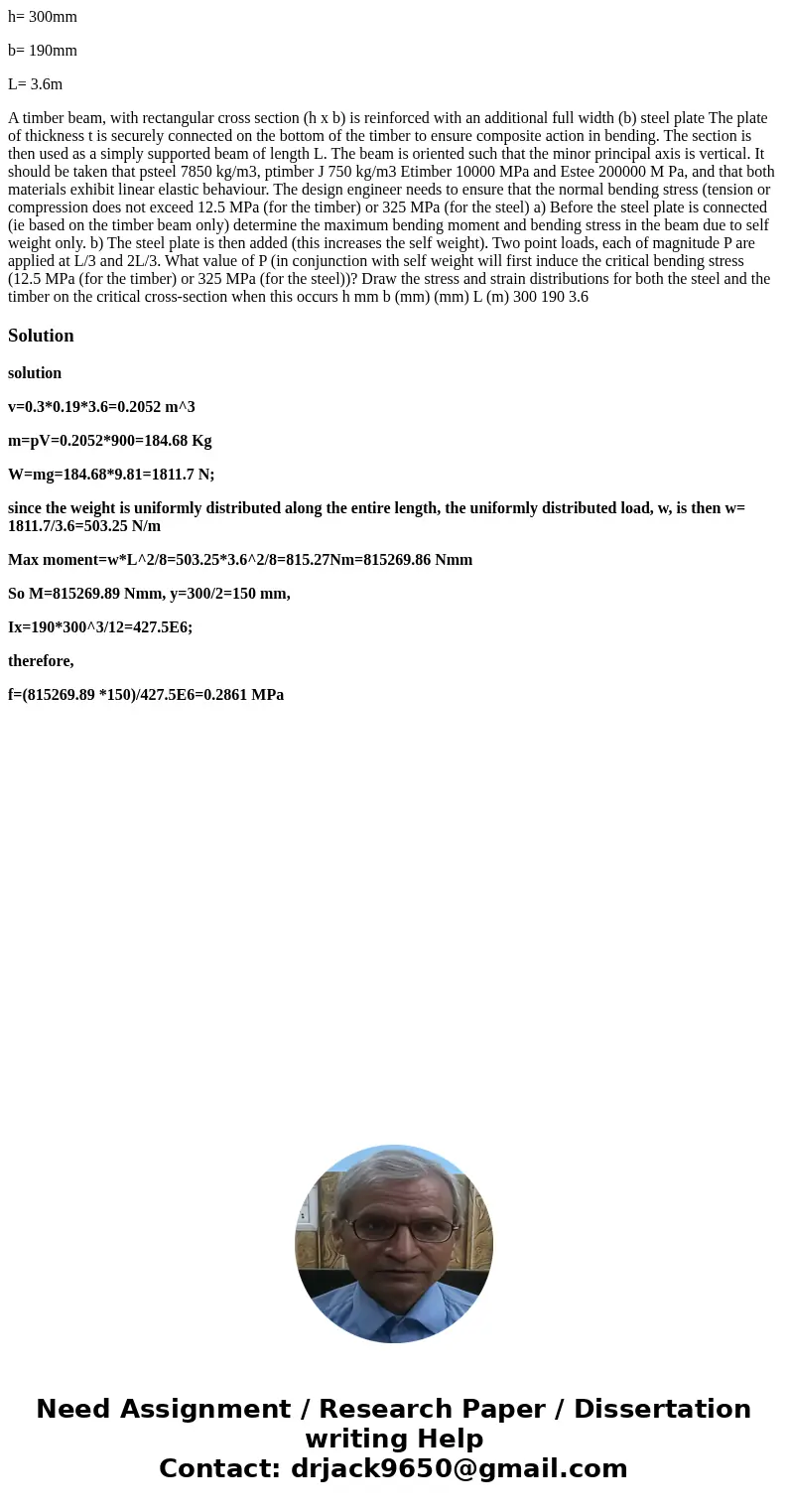h 300mm b 190mm L 36m A timber beam with rectangular cross s
h= 300mm
b= 190mm
L= 3.6m
A timber beam, with rectangular cross section (h x b) is reinforced with an additional full width (b) steel plate The plate of thickness t is securely connected on the bottom of the timber to ensure composite action in bending. The section is then used as a simply supported beam of length L. The beam is oriented such that the minor principal axis is vertical. It should be taken that psteel 7850 kg/m3, ptimber J 750 kg/m3 Etimber 10000 MPa and Estee 200000 M Pa, and that both materials exhibit linear elastic behaviour. The design engineer needs to ensure that the normal bending stress (tension or compression does not exceed 12.5 MPa (for the timber) or 325 MPa (for the steel) a) Before the steel plate is connected (ie based on the timber beam only) determine the maximum bending moment and bending stress in the beam due to self weight only. b) The steel plate is then added (this increases the self weight). Two point loads, each of magnitude P are applied at L/3 and 2L/3. What value of P (in conjunction with self weight will first induce the critical bending stress (12.5 MPa (for the timber) or 325 MPa (for the steel))? Draw the stress and strain distributions for both the steel and the timber on the critical cross-section when this occurs h mm b (mm) (mm) L (m) 300 190 3.6Solution
solution
v=0.3*0.19*3.6=0.2052 m^3
m=pV=0.2052*900=184.68 Kg
W=mg=184.68*9.81=1811.7 N;
since the weight is uniformly distributed along the entire length, the uniformly distributed load, w, is then w= 1811.7/3.6=503.25 N/m
Max moment=w*L^2/8=503.25*3.6^2/8=815.27Nm=815269.86 Nmm
So M=815269.89 Nmm, y=300/2=150 mm,
Ix=190*300^3/12=427.5E6;
therefore,
f=(815269.89 *150)/427.5E6=0.2861 MPa

 Homework Sourse
Homework Sourse